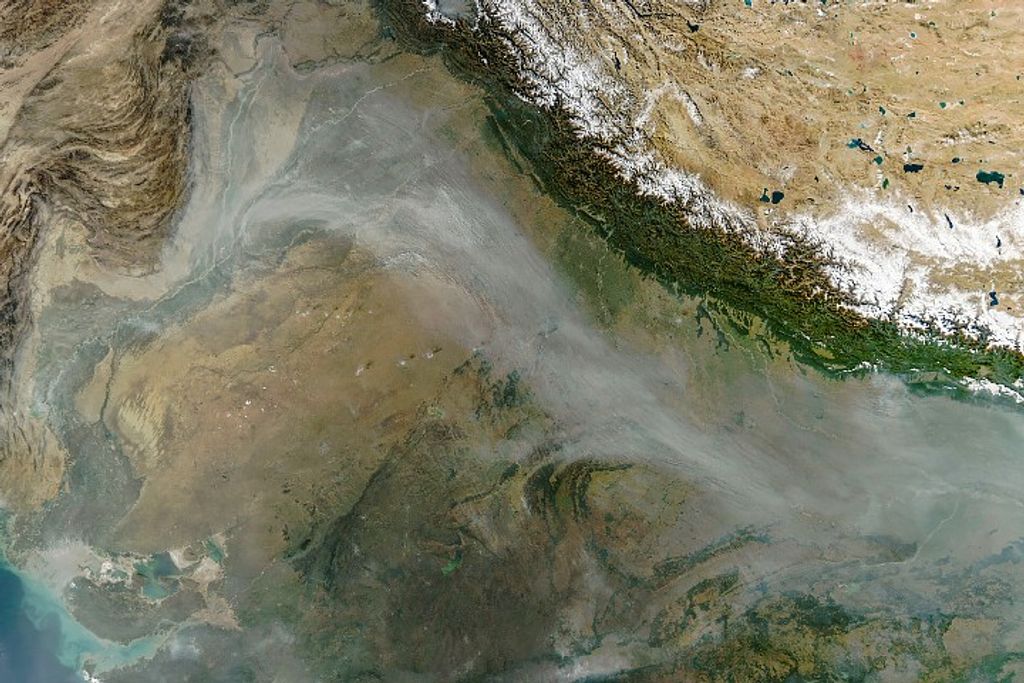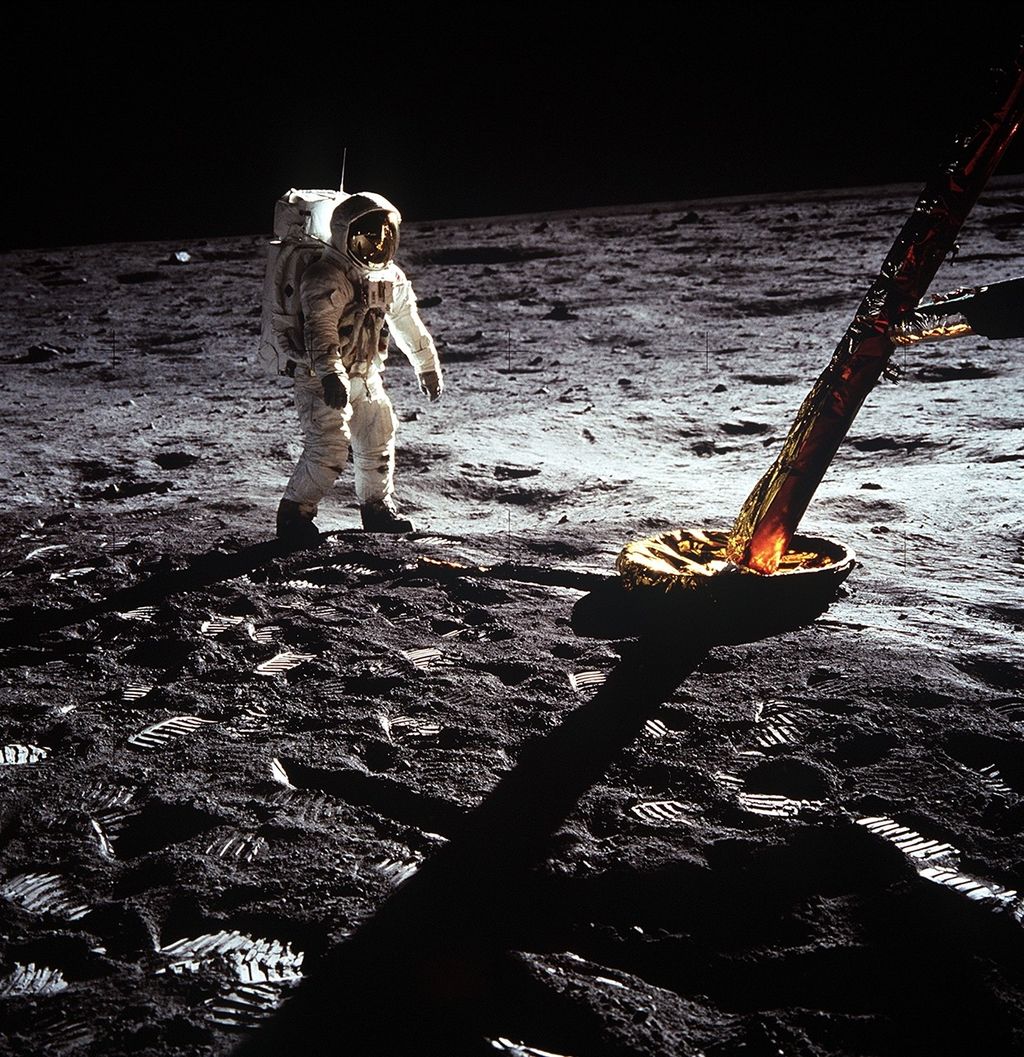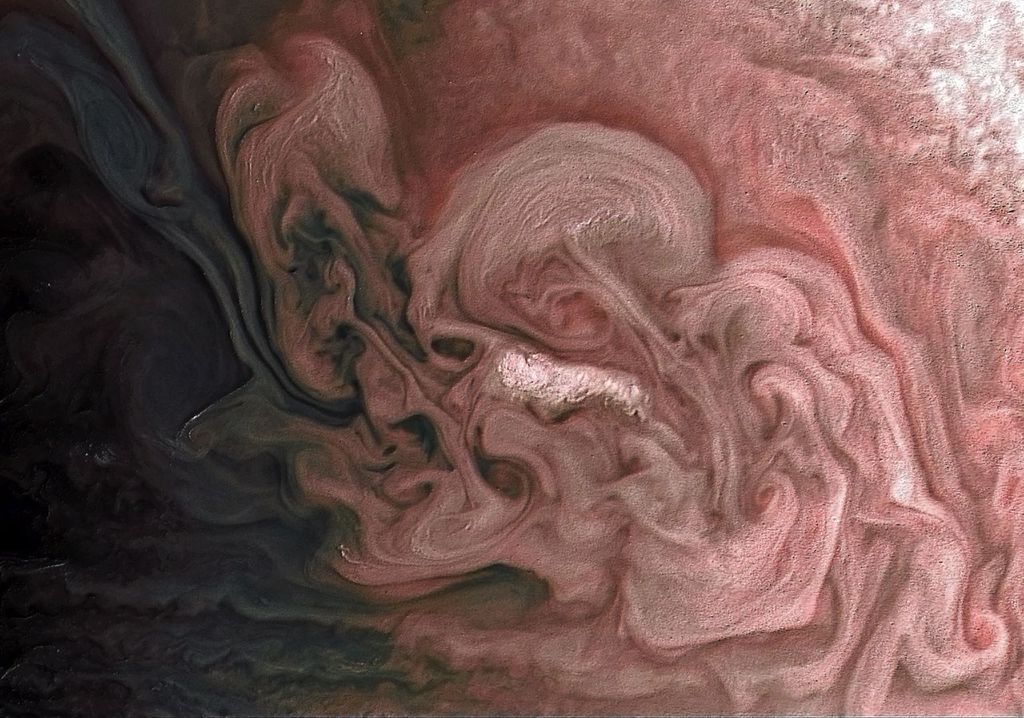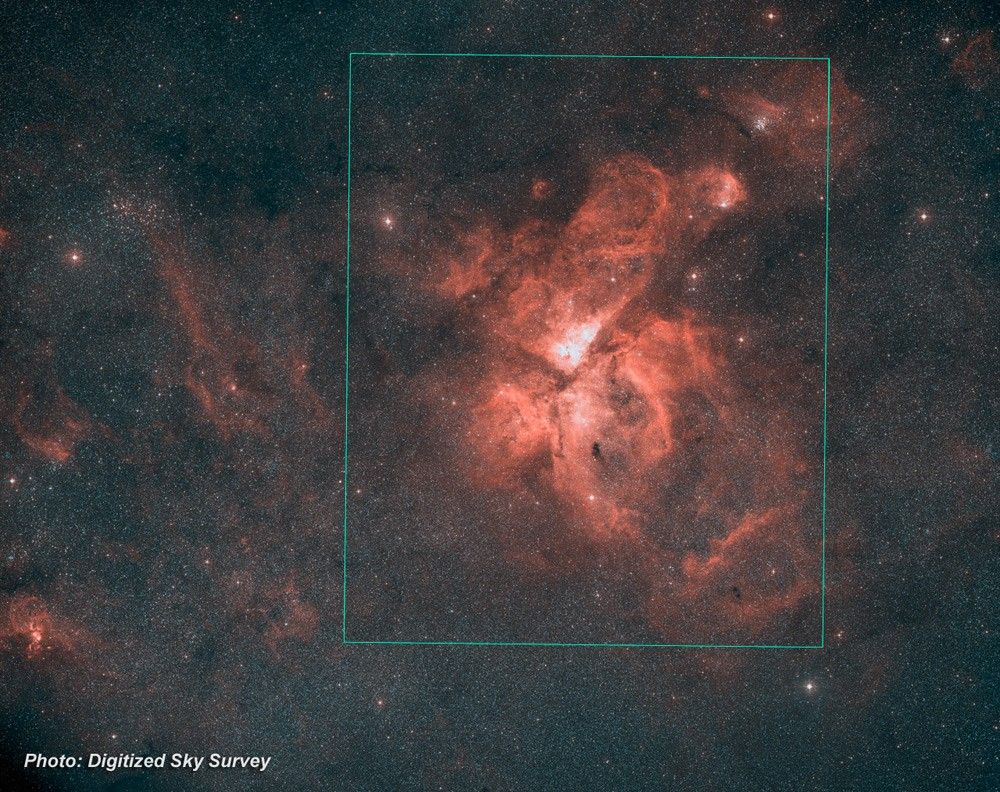1 min read
Hubble’s Wide View of ‘Mystic Mountain’ in Infrared

This is a NASA Hubble Space Telescope near-infrared-light image of a three-light-year-tall pillar of gas and dust that is being eaten away by the brilliant light from nearby stars in the tempestuous stellar nursery called the Carina Nebula, located 7,500 light-years away in the southern constellation Carina. The image marks the 20th anniversary of Hubble's launch and deployment into an orbit around Earth.
The image reveals a plethora of stars behind the gaseous veil of the nebula's wall of hydrogen, laced with dust. The foreground pillar becomes semi-transparent because infrared light from background stars penetrates through much of the dust. A few stars inside the pillar also become visible. The false colors are assigned to three different infrared wavelength ranges.
Hubble's Wide Field Camera 3 observed the pillar in February and March 2010.
About the Object
- R.A. PositionR.A. PositionRight ascension – analogous to longitude – is one component of an object's position.10h 44m 5.25s
- Dec. PositionDec. PositionDeclination – analogous to latitude – is one component of an object's position.-59° 29' 44.99"
- ConstellationConstellationOne of 88 recognized regions of the celestial sphere in which the object appears.Carina
- DistanceDistanceThe physical distance from Earth to the astronomical object. Distances within our solar system are usually measured in Astronomical Units (AU). Distances between stars are usually measured in light-years. Interstellar distances can also be measured in parsecs.7,500 light-years (2,300 parsecs)
About the Data
- Data DescriptionData DescriptionProposal: A description of the observations, their scientific justification, and the links to the data available in the science archive.
Science Team: The astronomers who planned the observations and analyzed the data. "PI" refers to the Principal Investigator.This image was created from HST data from proposal 12050: M. Livio, K. Noll, M. Mutchler, Z. Levay, L. Frattare, W. Januszewski, C. Christian, and T. Borders (Hubble 20th Anniversary Team, STScI). - InstrumentInstrumentThe science instrument used to produce the data.HST>WFC3/IR
- Exposure DatesExposure DatesThe date(s) that the telescope made its observations and the total exposure time.February/March 2010, Exposure Time: 12 hours
- FiltersFiltersThe camera filters that were used in the science observations.F126N ([Fe II]), F128N (Paschen-beta), and F164N ([Fe II])
- Object NameObject NameA name or catalog number that astronomers use to identify an astronomical object.HH 901 and HH 902 in the Carina Nebula
- Object DescriptionObject DescriptionThe type of astronomical object.Carina Nebula Star-forming Pillars and Herbig-Haro Objects with Jets
- Release DateApril 22, 2010
- Science ReleaseStarry-Eyed Hubble Celebrates 20 Years of Awe and Discovery
- CreditNASA, ESA, Hubble 20th Anniversary Team, Mario Livio (STScI)

This image is a composite of separate exposures made by the WFC3 instrument on the Hubble Space Telescope (HST). Each filter was used to sample a narrow wavelength range over a broad range of the visible colors. The composite color results from assigning different hues (colors) to each monochromatic (grayscale) image associated with an individual filter. In this case, the assigned colors are: Red: F126N ([Fe II]) Green: F128N (Paschen-beta) Blue: F164N ([Fe II])
Related Images & Videos

Hubble Captures View of 'Mystic Mountain'
This craggy fantasy mountaintop enshrouded by wispy clouds looks like a bizarre landscape from Tolkien's "The Lord of the Rings" or a Dr. Seuss book, depending on your imagination. The NASA Hubble Space Telescope image, which is even more dramatic than fiction, captures the...
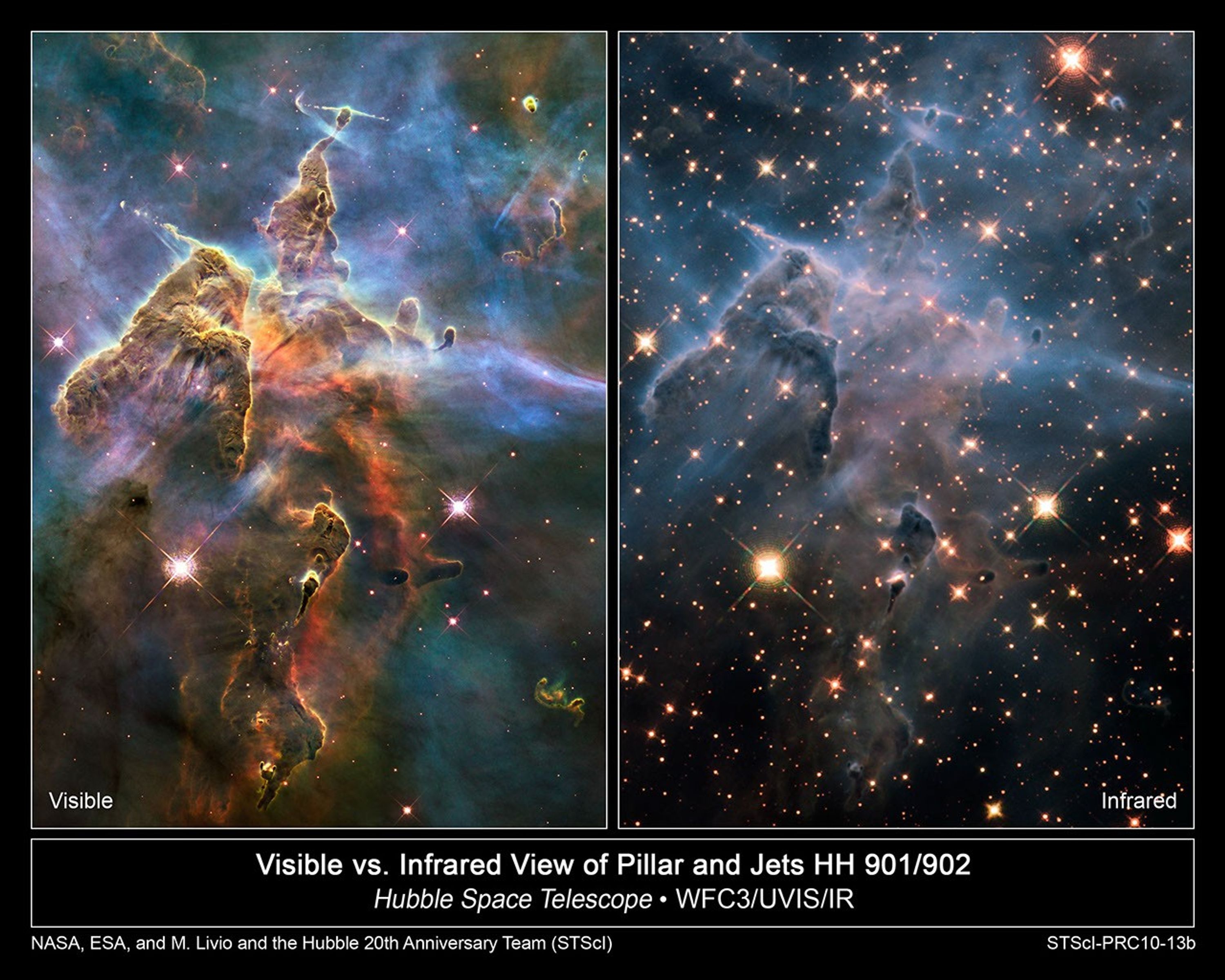
Comparison Views of 'Mystic Mountain'
These two images of a three-light-year-high pillar of star birth demonstrate how observations taken in visible and infrared light by NASA's Hubble Space Telescope reveal dramatically different and complementary views of an object. The pair of images demonstrate how Hubble's new...

Wide View of 'Mystic Mountain'
This craggy fantasy mountaintop enshrouded by wispy clouds looks like a bizarre landscape from Tolkien's "The Lord of the Rings" or a Dr. Seuss book, depending on your imagination. The NASA Hubble Space Telescope photograph, which is stranger than fiction, captures the chaotic...

Hubble Captures Spectacular "Landscape" in the Carina Nebula
NASA's Hubble Space Telescope captured this billowing cloud of cold interstellar gas and dust rising from a tempestuous stellar nursery located in the Carina Nebula, 7,500 light-years away in the southern constellation Carina. This pillar of dust and gas serves as an incubator...
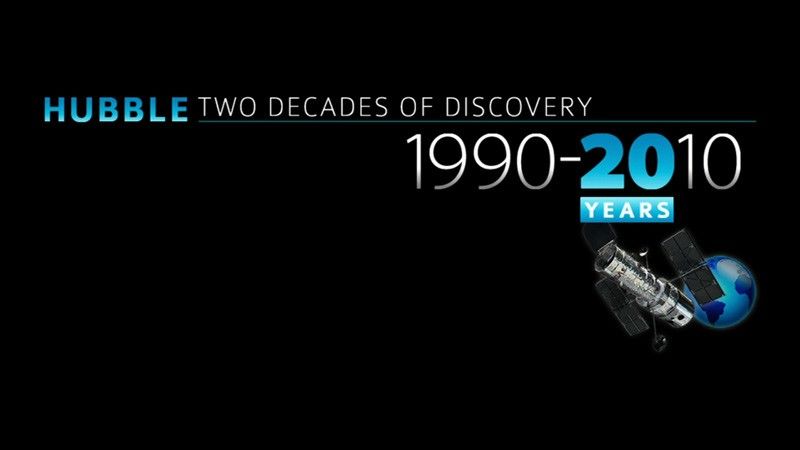
Hubble: Two Decades of Discovery (1990-2010)
Top astronomers who have worked on the Hubble Space Telescope over the past 20 years talk about their major discoveries that were made possible only with a spaceborne observatory. The 12-minute look at Hubble's top findings includes: galaxy evolution, dark matter, the age of the...
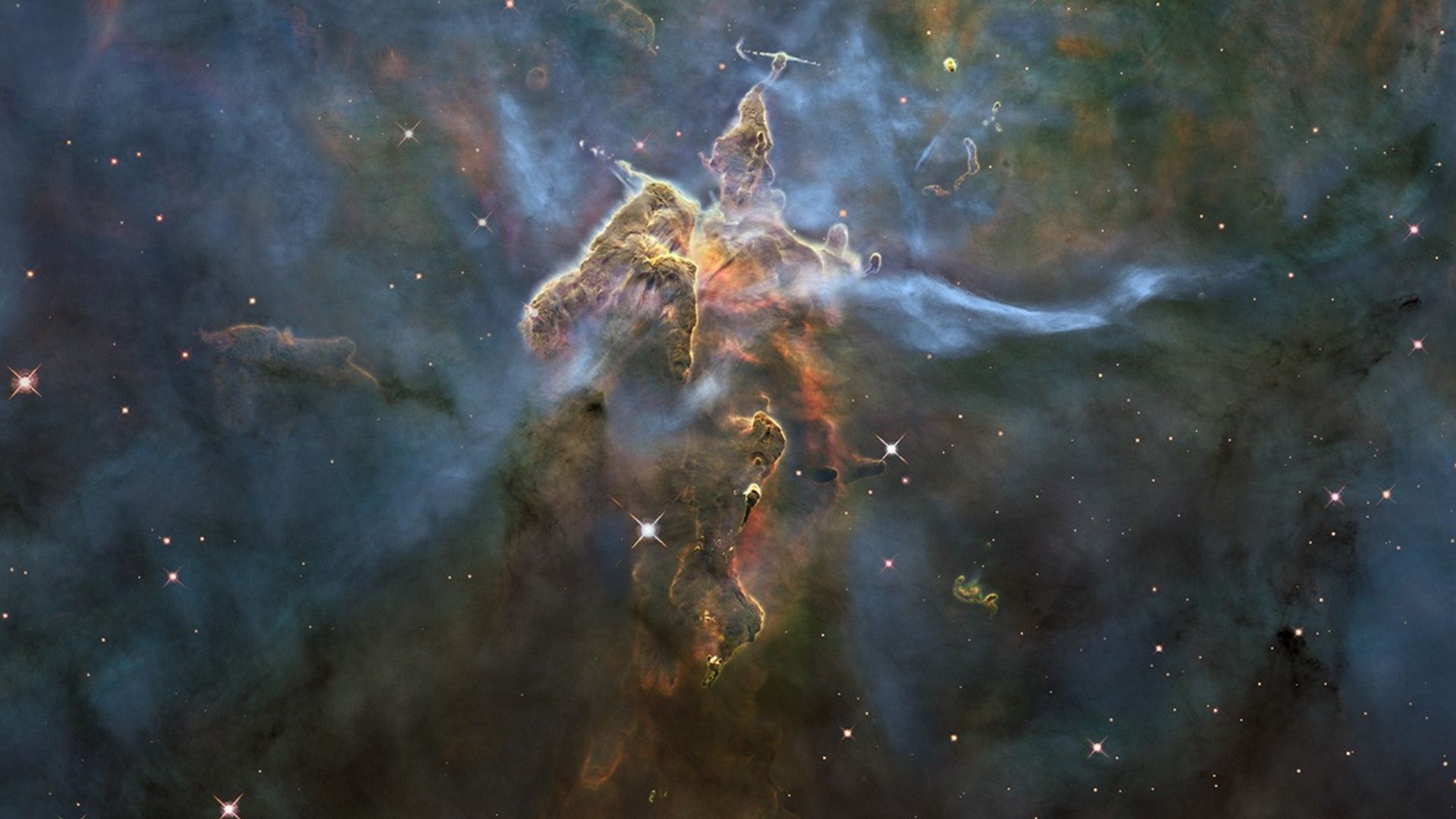
3-D Trip into the Carina Nebula
This is a three-dimensional trip into a giant "mountain" of cool hydrogen and dust in the Carina Nebula, a vast star-forming region in our Milky Way Galaxy. The nebula is too far away for Hubble Space Telescope to see in true three dimensions. But this visualization creates...
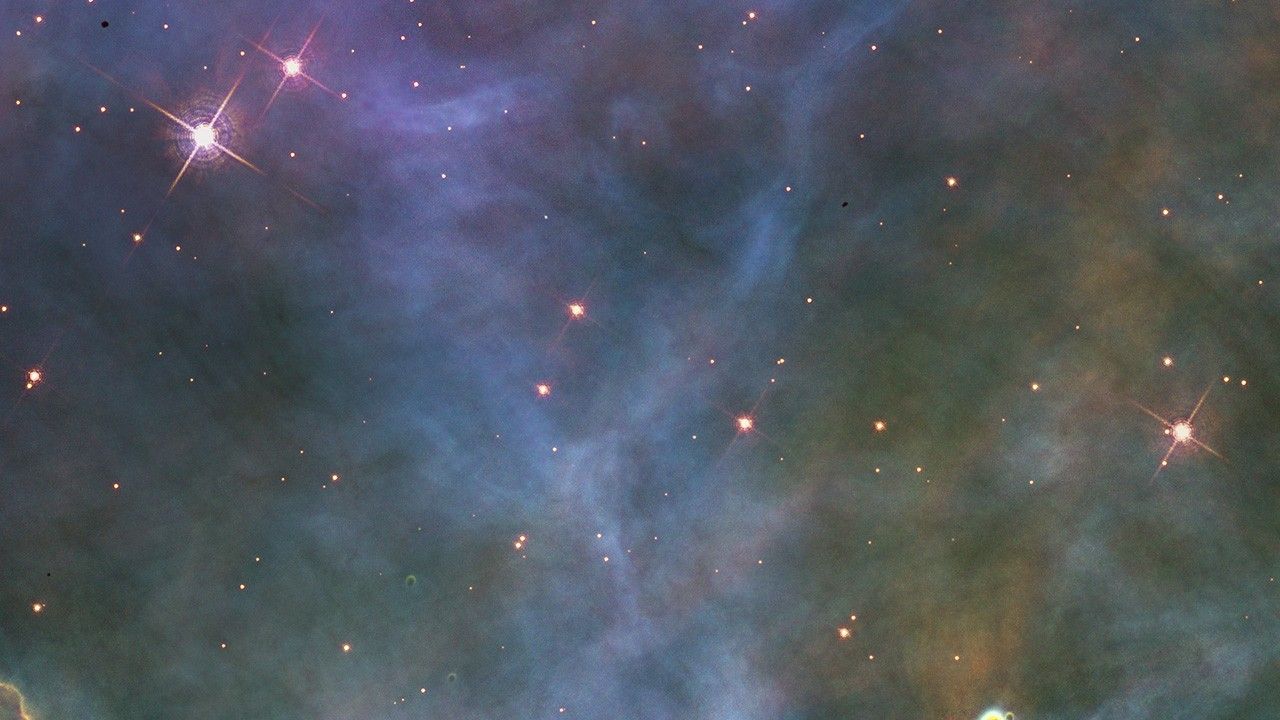
Hubble 20th Anniversary Carina Nebula – Pan
This is a pan across the complex gas structures in a small portion of the Carina Nebula. The nebula is a cold cloud of predominantly hydrogen gas. It is laced with dust, which makes the cloud opaque. The cloud is being eroded by a gusher of ultraviolet light from young stars in...
Share
Details
Claire Andreoli
NASA’s Goddard Space Flight Center
Greenbelt, Maryland
claire.andreoli@nasa.gov









